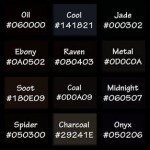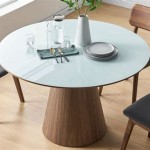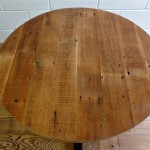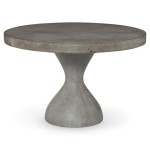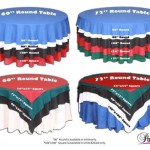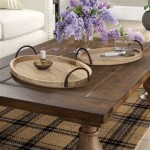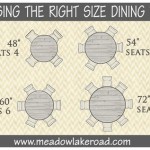How to Make an Oval Tablecloth
Creating a custom oval tablecloth can elevate the aesthetic of your dining room or enhance the ambiance of a special occasion. While it may seem daunting, tailoring an oval tablecloth is a manageable project with careful planning and execution. This guide will provide you with a step-by-step process, addressing key considerations, materials, and techniques for a successful outcome.
1. Determine the Dimensions and Gather Materials
The foundation of any successful sewing project lies in meticulous preparation. Before embarking on the cutting and stitching, it is crucial to determine the precise dimensions of the oval tablecloth. Measure the length and width of your oval table. Once you have these measurements, add the desired overhang for a polished drape. The standard overhang for a tablecloth is 8-12 inches, but you can adjust this according to your preference.
Next, gather the essential materials for your project. These include:
- Fabric: Choose a suitable fabric that complements your table and decor. Linen, cotton, or a blend of these materials is often favored for their durability and elegance. Consider the desired weight and texture for the tablecloth.
- Measuring Tape: A tape measure is essential for accurate size readings.
- Scissors: A sharp pair of fabric scissors will ensure clean cuts.
- Sewing Machine: While a sewing machine is recommended, a sturdy needle and thread can be used for hand stitching.
- Thread: Select thread that matches the fabric color or complements the overall aesthetic.
- Pins: Pins will hold fabric pieces in place during the sewing process.
- Iron: An iron is useful for pressing seams and ensuring a crisp finish.
2. Calculate and Cut Fabric
Now that you have determined the desired dimensions and gathered your materials, you can begin the cutting process. To calculate the fabric needed for the tablecloth, you can use a simple formula.
For the length of the fabric, take the length of the table plus twice the desired overhang. For the width of the fabric, take the width of the table plus twice the desired overhang. For example, if your table is 60 inches long and 40 inches wide, and you want an 8-inch overhang, you would need fabric that is 76 inches long (60 + 8 + 8) and 56 inches wide (40 + 8 + 8).
Once you have calculated the required fabric dimensions, carefully cut the fabric to size. Use sharp scissors and a straight edge for precise cuts. If your fabric has a pattern, ensure the pattern aligns correctly for a cohesive design.
3. Create the Oval Shape
With the fabric cut to size, you can now shape it into an oval. There are two primary approaches to achieving the desired oval shape:
- Freehand Cutting: This method involves using a smooth, curved object as a guide for the oval shape. You can use a plate, a bowl, or even a roll of paper to create the desired curvature along the fabric edges. Using a marker or chalk, trace the curve onto the fabric and carefully cut along the marked line.
- Pattern Template: For a more precise approach, you can create a pattern template. To do this, use a large sheet of paper or cardboard to draw an oval with the desired dimensions. Cut out the oval shape and use it as a template to trace onto the fabric. The template ensures consistent oval dimensions across both fabric pieces.
Both methods can be effective, and the choice depends on your preference for precision and the tools available.
4. Sew the Tablecloth
After creating the oval fabric pieces, you will stitch the edges together to form the tablecloth. You can choose to create a simple straight seam or a decorative seam that complements the fabric and table's style. To start, line up the two raw edges of the fabric, right sides facing each other, and pin them together.
Use your sewing machine or needle and thread to sew along the pinned edges. For a straight seam, sew a straight line along the edge of the fabric. For a decorative seam, consider using a zig-zag stitch or other embellishments. Remember to back stitch at the beginning and end of each seam to secure the stitches.
Once the seams are sewn, press the seams open to create a flat, finished edge. You can finish the edges of the tablecloth with a serger or by hand, but this is optional. If you choose to finish the edges, trim the seam allowance to reduce bulk and sew a neat finish along the edge of the tablecloth.
A custom-made oval tablecloth can enhance the elegance and sophistication of your dining space. Tailor-made tablecloths offer a personalized touch, bringing individuality and style to your decor. Following these steps will equip you with the knowledge and skills to create a beautiful and functional oval tablecloth for your home.

How To Make A Custom Tablecloth The Easy Way

Meg Roke Knits Oval Table Cloth Tutorial

How To Make A Tablecloth Fit Any Table Shape Diy Sewing Tutorial

How To Make A Tablecloth

Oval Tablecloths Huddleson Linens Blog

Oval Boho Tablecloth For Table Covers Wrinkle Free Bohemian Style Design Cloth Dining Room Tabletop Decoration 60 X 84 Inch Retro

Adapting A Rectangular Quilt To Make An Oval Tablecloth Am I Crazy Quiltingboard Forums

Oval Linen Tablecloth Long Table Cloth Sheet Wide Round Large Custom Dining Cover

Oval Tablecloth Modern Blue Indoor Outdoor Waterproof Wrinkle Free Durable For Tables 60 X 120 Inch

Oval Pineapple
Related Posts

